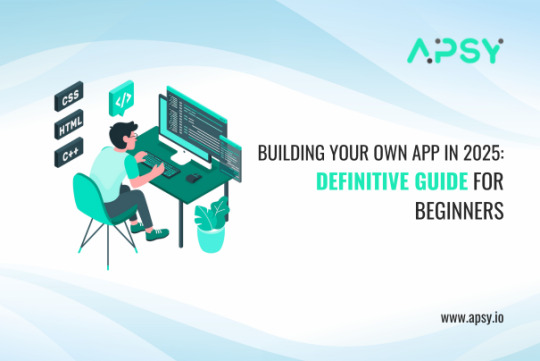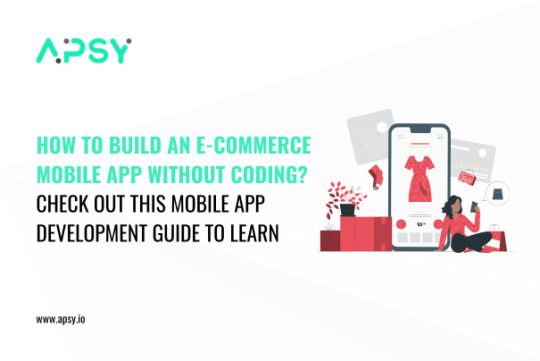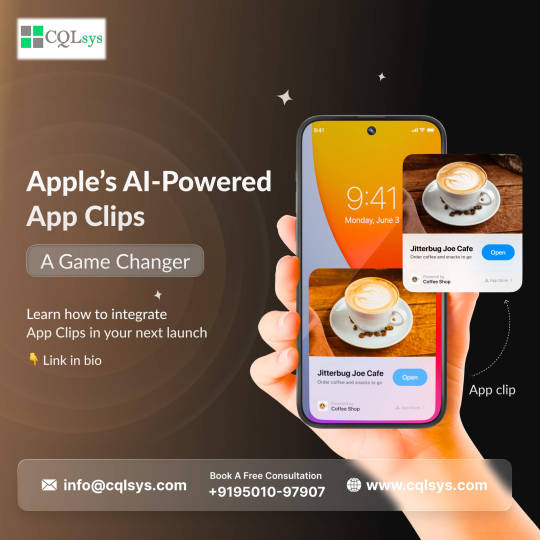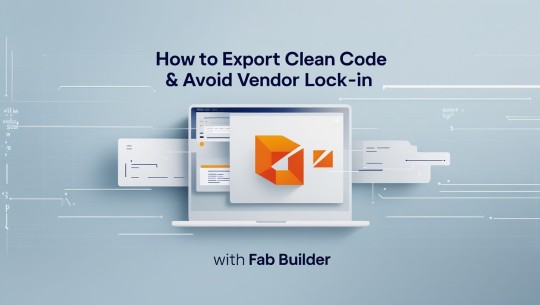#mobile application development platform
Explore tagged Tumblr posts
Text

Learn how to build your app in 2025
Check out the ways on how to build your app in 2025. To know more about mobile app creators, visit this blog.
0 notes
Text
Website design and cloud platform course in janakpuri delhi

We are providing website designing, web Develoments, Mobile App Designing, Application Designing Google cloud platform Course in janakpuri delhi
Visit Website :- https://codedict.in/
Call Now:- 9205186282
#design#web design services#applications#Could Google Platform#Web Design#web development#Degital Marketing#Seo#Google ads#mobile app design bd#mobile app development#Mobile Application Service
2 notes
·
View notes
Text

Next-Gen IoT Solutions for Effortless Connectivity and Control-MeshTek
Experience the future of IoT with our next-generation solutions designed for effortless connectivity and intelligent control. Featuring long-range Bluetooth mesh technology, real-time monitoring, and scalable architecture, our platform empowers you to manage devices seamlessly. With intuitive mobile apps and advanced analytics dashboards, you can monitor performance, optimize operations, and scale networks effortlessly.
#iot development services#iot platform#iotsolutions#digital art#technology#hardware#mobile application development
1 note
·
View note
Text
#mobile app development company#app development service#ios app development companies#android app development service#android app development company#ios apps development#cross platform application development#hybrid mobile app development#multiplatform mobile app development
2 notes
·
View notes
Link
Which platform to choose Hybrid, Native, or Cross-Platform?
Mobile app development is a rapidly growing industry that has seen tremendous growth in recent years. With the rise of smartphones and tablets, businesses are looking for ways to reach their customers on these devices. In this article, we will discuss the three most popular platforms for mobile app development in 2023: Hybrid, Native, and Cross-Platform.
#Hybrid#Native#Cross-Platform#app development#phoenix#scottsdale#arizona#mobile application development
3 notes
·
View notes
Text
The Ultimate Guide to Cross Platform App Development Frameworks in 2023

However, businesses are now switching to cross-platform app development to reduce development costs and time. Compared to native app development, there are countless benefits that attract companies to choose this method. If you are still thinking about your development approach, this article will shed light on why you should choose cross-platform mobile app development. Cross-platform mobile app development is an approach that allows developers to build a single app for multiple platforms. Developers can use a single codebase, so they don’t have to develop multiple versions of the same application. They can write the code once and deploy it on multiple platforms to streamline development.
#Cross Platform App Development#mobile app development#android app development#app development#mobile application development#app developing company#app developers#Native App Development#React Native App Development#Flutter App Development#Xamarin App Development#ecommerce#marketing#australia#melbourne
1 note
·
View note
Text
Launch Web & Mobile Apps Faster with FAB Studio
Launch Production-Ready Apps in Minutes — Without the Headache
Say hello to FAB Studio — your complete platform for building and launching web and mobile apps with speed, precision, and zero chaos.
From picking your stack to going live, it’s as easy as: Login → Build → Deploy
Here’s how it works: 👤 Add your name, role & company ⚙️ Select your frontend, backend, database, and mobile framework 🚀 Click 'Create App' — and watch your project come to life!
Whether you're a solo founder, leading a dev team, or scaling a fast-paced startup, FAB Studio puts the power of production-ready development at your fingertips. 💡 Build smarter, not slower. Start building with FAB Studio now → 🔗 https://fabbuilder.com/pages/fab-studio-onboarding-guide/ 📩 [email protected] 📞 +91 9812885882 | +46 769704864
#app development#low code app development#low code platform#Code generation Platform#ai code generation#mobile app development#fab builder#code generation#application developer#FAB Studio
0 notes
Text
Cross-Platform App Development in UAE: Hire the best app developer
Trying to widen your online audience without incurring over double the spending on development? Cross-Platform App Development in UAE is specifically designed for companies planning to develop powerful mobile applications for both iOS and Android platforms at the same time. WDCS Technology has experts who create visually pleasing and market ready applications using Flutter and React Native for the UAE region. From enterprises to startups, we have a solution for every business model. Our proficient developers ensure the quality and performance of the apps. Our mobile app development services in UAE range from managing a single application to a complete app suite for a business. Contact us today and let the leading mobile app developer in UAE transform your concept into a functional application!
#cross platform app development#hire mobile app developer#mobile app development dubai#mobile application development#mobile app development
0 notes
Text
Top Reasons to Choose an App Development Company in Chandigarh for Your Next Project
Discover top reasons to choose an App Development Company in Chandigarh for your next project. From expert Mobile Application Design And Development to the Best Cross Platform App Development, explore innovative, scalable, and user-focused solutions by top firms like Triitans Solitaire
You can reach us at 0172–5010529 or [email protected]
Find out more about App Development by reading the full blog: Mobile App Development Company in India
#App Development Company In Chandigarh#Mobile Application Design And Development#Best Cross Platform App Development
0 notes
Text

Learn how to build an e-commerce mobile app without coding
Find out about the ways on how to build an e-commerce mobile app without coding. Reach out to the best mobile application development platforms to learn how to create an app with AI.
#web and mobile app development#mobile application development platform#best AI tools for app development#best mobile app creators#create an app with AI
1 note
·
View note
Text

Get Your App Clip Built – Start Engaging Users Instantly!
At CQLsys Technologies, we design, develop, and seamlessly integrate Apple App Clips into your iOS mobile solution — enabling users to experience key app features instantly, without a full download. Drive engagement, increase conversions, and make a powerful first impression from Day 1.
#android app development#cross platform mobile application development#flutter app development#application development for mobile#mobile application development#custom mobile application development#mobile application development company#enterprise mobile application development company#mobile application developer#ios mobile application development#mobile phone application development#mobile application development companies
0 notes
Text
Revolutionizing Industries with Smart IoT App Solutions

The powerful capabilities of a leading IoT App Development Company, showcasing smart city controls, industrial sensors, agriculture monitoring, and wearable health trackers — all interconnected through advanced mobile applications. MeshTek empowers businesses with scalable, secure, and intelligent IoT app development that drives real-time automation and seamless device communication.
#IoT App Development Company#Smart City Automation#Industrial IoT Solutions#Agriculture IoT Monitoring#Wearable Health Tech#Mobile IoT Applications#Bluetooth IoT Connectivity#Scalable IoT Networks#Real-Time Device Communication#Edge Computing IoT#IoT System Integration#Connected Infrastructure#Smart App Development#Secure IoT Platforms#meshtek
0 notes
Text
#android app development company#best cross platform mobile app development#cross platform app development company#Cross-platform with Kotlin Native#ios application development company#Kotlin cross-platform development
0 notes
Link
Native vs Cross-Platform Development: Which is Right for Your App?
Gain a developer's insight into the native vs cross-platform debate. Uncover the trade-offs and considerations that will influence your decision in delivering a top-notch mobile app.
#native development#cross-platform development#mobile application development#mobile app#phoenix#scottsdale#arizon
2 notes
·
View notes
Link
Mobile Application Development: A Comprehensive Guide to App Development, Mobile Design, and Cross-Platform Apps – For Technology
0 notes
Text
How to Export Clean Code & Avoid Vendor Lock-In with FAB Builder

Have you ever built an application on a platform only to realize later that you’re stuck with it? This is a common problem in the modern development ecosystem, especially with the growing popularity of no code platforms. While these platforms promise speed, flexibility, and scalability, many developers and businesses find themselves trapped in what’s called vendor lock-in. But does it have to be this way?
What if there was a way to combine the speed of a no code platform with the freedom of custom code? What if you could develop applications quickly and still walk away with clean, exportable code you truly own? This is where FAB Builder enters the conversation, changing the way we think about code generation and app development.
Why is Clean Code Export Important?
Let’s start with the basics. What does it mean to export clean code?
In the world of application development platforms, clean code refers to code that is easy to read, maintain, modify, and reuse. Clean code is well-structured, follows standard conventions, and avoids unnecessary complexity. Exportable clean code means that what you create inside a platform can be taken out and run, modified, or extended independently.
This feature is not just a convenience—it’s a necessity.
When your business depends on a web or mobile app, being tied to a specific platform to maintain or scale it can become a serious roadblock. You might face challenges like:
Paying recurring licensing fees
Waiting for vendor-specific updates
Inability to integrate with other tools
Trouble onboarding developers who aren’t familiar with the proprietary environment
Risk of losing your application if the platform goes offline or changes its policy
Would you buy a car if you could only drive it on one specific road? Probably not. That’s what vendor lock-in feels like in the tech world.
What Is Vendor Lock-In in No Code Platforms?
Vendor lock-in happens when the platform you use to build your application restricts your ability to move your app or data elsewhere. Many no code platforms offer great tools, intuitive design, and fast deployment, but the trade-off is that the app lives entirely within their ecosystem.
You may have limited access to the underlying code, meaning you can’t export or run your app without the platform. Even if code export is offered, it’s often poorly structured, bloated, or filled with proprietary dependencies that make it nearly impossible to edit or manage outside the original environment.
Is this really the freedom that no code promised?
Can You Really Have the Best of Both Worlds?
Here comes the big question: Can you combine the ease of no code platforms with full control over your application? The answer lies in the evolution of modern code generation technology.
Traditional code generators have been around for a while, but many still fall into the same trap—producing unreadable or unscalable code. But with advancements in AI code generators and smart code builders, the approach is shifting.
FAB Builder, for instance, has been designed to rethink how we build, export, and scale applications.
How FAB Builder Approaches Code Generation Differently
When examining FAB Builder, a few things become clear. The platform positions itself as an intuitive application development platform that puts control back into the developer’s hands.
So how does FAB Builder help you avoid vendor lock-in?
1. Exportable, Developer-Ready Code
One of the standout features is its ability to generate exportable code that adheres to standard frameworks. Instead of trapping you in a closed ecosystem, FAB Builder acts more like an intelligent code generator—allowing you to develop visually and then export real, clean code.
You can take this code, modify it in your preferred IDE, integrate it with third-party systems, or even host it independently. This breaks the cycle of dependency and allows full autonomy over the product.
Wouldn't you rather build with confidence, knowing your code is yours to keep?
2. Clean Code Structure for Scalability
The code generated by FAB Builder isn’t just exportable—it’s also clean and modular. That means any developer with experience in standard technologies can pick it up, understand it, and work with it. Clean, readable code is crucial when scaling your application, onboarding new team members, or debugging.
If you’ve ever tried to untangle poorly generated code, you know how much time and energy that consumes. So why not use a code builder that keeps code hygiene in mind from the beginning?
3. AI-Powered Code Generation with Developer Logic
Another key differentiator is FAB Builder’s use of AI—not just for smart suggestions or faster development, but for real-time AI code generation that respects logic, flow, and modern best practices.
Instead of spitting out blocks of generic code, the system understands the user’s intent, making it possible to generate clean, optimized code that mirrors how a developer would write it.
Isn’t it time that AI-assisted coding stopped being a gimmick and started being practical?
Why Should Businesses Care About Vendor Lock-In?
From a business perspective, being tied to a single platform can have long-term consequences. Initially, it may seem cost-effective or timesaving, but as your application evolves, the limitations begin to surface.
You might need to:
Integrate with legacy systems
Implement custom features not supported by the platform
Shift to on-premises hosting due to compliance requirements
Transition to a new tech stack based on market demands
If you’re locked in, each of these moves becomes difficult, expensive, or impossible.
Choosing a platform that gives you control from day one can help future-proof your product.
Is No Code the Right Approach if You Want Full Control?
This is where the conversation gets interesting. Traditional views often pit no code against full-stack development—as if one is fast but limited, while the other is powerful but slow. But with platforms like FAB Builder, this binary thinking is being challenged.
No code doesn’t have to mean no control.
By providing a hybrid approach—visual development backed by exportable, structured code—FAB Builder offers a middle path. It empowers non-developers to prototype and build, while also enabling developers to refine, scale, and own the final product.
Can a no code platform be both easy and professional? The answer seems to be yes—if it’s built with flexibility and ownership in mind.
How to Avoid Vendor Lock-In: Practical Steps
Avoiding vendor lock-in requires a conscious approach. Here are key considerations when evaluating a platform:
Does the Platform Offer Code Export?
This should be the first box to check. Look for platforms that don’t just offer code export, but ensure that the code is well-structured and free from proprietary dependencies.
What Technology Stack Does It Use?
Make sure the generated code is based on widely accepted frameworks and languages. This will make it easier to maintain and scale with standard developer resources.
Can Developers Take Over Easily?
Even if the app was built using no code tools, the code should be intuitive enough for professional developers to work with. You shouldn’t need to “rebuild” everything just to add new features.
Is the Platform Transparent?
Transparency about how the code is structured, what technologies are used, and how the backend operates is critical. Avoid platforms that operate like black boxes.
Does It Support Long-Term Flexibility?
Think about your product’s future. Will you need to integrate with other services? Host on different servers? Add new user roles or workflows? Choose a platform that supports this kind of evolution.
Is FAB Builder the Future of Code Ownership?
While there are many tools in the no code space, few manage to offer the same degree of balance between visual simplicity and backend control as FAB Builder. Its emphasis on clean code generation, developer-ready exports, and AI-assisted logic makes it a powerful tool for those who want to build quickly but scale intelligently.
More than just a development platform, it acts as a code builder that doesn’t compromise code ownership—a crucial need in today’s fast-paced, ever-changing tech environment.
In a world where technology changes overnight, wouldn’t you rather build a foundation you control?
Final Thoughts: What Kind of Builder Do You Want to Be?
Choosing a no code platform isn’t just about faster development—it’s about long-term control. With most platforms, speed often comes at the cost of ownership. But tools like FAB Builder challenge that norm by offering both visual simplicity and full access to clean, exportable code.
In a rapidly changing tech world, being able to own, edit, and scale your application without limitations is a major advantage. Whether you're building a startup MVP or a scalable enterprise solution, having the freedom to grow on your own terms is essential.
So ask yourself—do you want to be a builder who’s locked into a system, or one who fully owns and shapes their product from start to finish? With the right platform, you don’t have to choose between ease and control—you can have both.
FAQs
Q1. What is vendor lock-in in no code platforms? Vendor lock-in refers to the limitations users face when they cannot move their app, data, or code outside a platform, often due to lack of exportable or editable code.
Q2. Can no code platforms like FAB Builder export clean code? Yes, FAB Builder allows developers to export clean, modular code that can be independently hosted, modified, and extended without relying on the platform.
Q3. Why is clean code important for application development? Clean code ensures scalability, easier debugging, better collaboration among developers, and long-term sustainability of your application.
Q4. How does FAB Builder use AI in code generation? FAB Builder uses AI to understand the user's intent and generate developer-grade, optimized code structures, improving both speed and accuracy.
Q5. What are the benefits of using a hybrid no code platform? A hybrid no code platform like FAB Builder allows fast visual development along with full code export, offering the best of both worlds—speed and control.
#app development#low code platforms#code generation#ai code generation#app developers#fab builder#application developer#mobile app development#ai powered solutions
0 notes